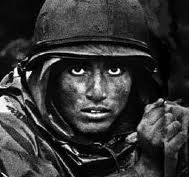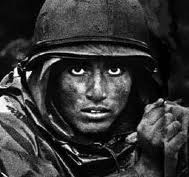
by Chaplain Kathie
An “expert” just came out and set us back 40 years on PTSD. He thinks there is no effective treatment and that time will take over. In other words, “get over it” leaving veterans to think there is no hope again.
Here we have a major line of BS from an “expert” on PTSD.
Treatment remains elusive.
Wrong. There are many different programs that do in fact help them heal. There is no one size fits all in anything but there are programs that do help. In other words, treatment is not elusive. So far a “cure” is elusive but not help or hope.
This is another one.
“Time is the only truly effective treatment, but it is not universally effective,” he said. Those with full-blown PTSD reportedly have a 50 percent chance of recovering within 30 years. For others, it could take longer.
Time works fine after a shock for some people but that depends on a lot of factors like if it seems to ease up within 30 days. Time does more damage when it is Post Traumatic Stress Disorder and it is allowed to get worse like an infection that spreads out digging deeper into the life of the veteran.
But this one tops the BS list from this one piece.
Studies estimate that one in every five military personnel returning from Iraq or Afghanistan has PTSD.
Right after he put the number at 50,000 out of almost 2 million. Numbers don’t add up any more than what he had to say about “time” suggesting someone can just get over while Mackowiak gave examples of long suffering. This piece is very harmful because he also suggests there is no treatment. So what has he been doing if there is no treatment?
Not common knowledge as far as the media goes but we topped a million this year. Not that the veteran’s claims have been approved or that they have all been diagnosed with PTSD, but when you take the number of active military on medication for “mental health” then add in the claims, pending claims and the suicides, you get there pretty fast. Then you also have to remember there were over 22,000 discharged under the false finding of “personality disorder” which was just a way to avoid having to take care of them.
Add to this from TIME June 2008
“the Army has by far the most troops deployed to the war zones — about 20,000 troops in Afghanistan and Iraq were on such medications last fall. The Army estimates that authorized drug use splits roughly fifty-fifty between troops taking antidepressants — largely the class of drugs that includes Prozac and Zoloft — and those taking prescription sleeping pills like Ambien.”
…..
Nearly 40% of Army suicide victims in 2006 and 2007 took psychotropic drugs — overwhelmingly, selective serotonin reuptake inhibitors (SSRIs) like Prozac and Zoloft.
Read more: America’s medicated Army
With numbers like this alone, no one can really believe the 50,000 number is a real one.
Local doctor: Number of vets with stress disorder rising
50K troops deployed to wars suffer from condition
By VAL HYMES, For The Capital
Capital Gazette Communications Published 11/26/10
More than 50,000 of the nearly 2 million U.S. troops deployed in two wars have been diagnosed with post-traumatic stress disorder, according to a local expert on a condition once known as shell shock or combat fatigue.And the number of cases appears to be climbing.“Imagine all the undiagnosed cases out there that are waiting to present themselves to us – not just the medical community, but to all of us,” said Dr. Philip A. Mackowiak of Sherwood Forest, chief of medicine for the Baltimore VA Hospital.
The physician, the author of “Post-Mortem: Solving History’s Great Medical Mysteries,” spoke to the congregation of Epiphany Episcopal Church in Odenton on the Sunday after Veterans Day.
“I have cared for war veterans for all of my professional life and have studied PTSD as a result of my interest in disorders of famous historical figures,” said Mackowiak, who is also vice chairman of the Department of Medicine at the University of Maryland’s School of Medicine.
As examples, he cited Florence Nightingale, Alexander the Great, Captain James Cook and the poet Emily Dickinson, all of whom appear to have suffered from PTSD. Dickinson apparently withdrew into reclusiveness in response to the deaths of close relatives during her adolescence.
read more hereNumber of vets with stress disorder rising
Sorry but I’ve been reading experts for more than half my life on PTSD and they do not agree with what this man has to say at all. There is no cure but there are many treatments and ways to heal. Being supportive is important but it does little good if you do not understand what you are being supportive of.
Knowledge is the key when it comes to the people in the lives of PTSD veterans. He is right when he said that it does not just strike after war but from other causes, so it is even more important that an “expert” is very careful about what he says so that people do not feel as if it is hopeless and they are doomed to living the way they are without any hope of it getting better. Time is the enemy if there is not treatment. It gets worse. Vietnam veterans went too long without help so they will not have the same results as newly exposed veterans getting help early on but even for them, it is not hopeless. They can live better lives if they finally seek help. The earlier treatment begins the more the symptoms can be reversed.
You would have to have a great imagination to think a veteran would want to go for help after this came out. He said it takes time and there is no effective treatment, so why on earth would they bother?
Also add in this about “time” and waiting to “get over it” from wounded warrior.
Invisible Wounds
By Teri Okita – bio | emailHONOLULU (HawaiiNewsNow) – The Defense Department estimates up to one-fifth of veterans who served in Iraq and Afghanistan will experience some type of post traumatic stress disorder. Many troops are still hesitant to get help because of the stigma attached, but the military is offering support and acceptance like never before.
The battlefield of Afghanistan is a far cry from the Wheatfield of Vincent Van Gogh.
But here at the Honolulu Academy of Art, Marine Corporal Gary Brewer is learning to deal with classic symptoms of PTSD, post-traumatic stress disorder, including irritability, hyper-vigilance, and a self-professed bad attitude.
“I just wanted to be, kind of, on my own. Just let me be and maybe I’ll just get over it by myself – and then, I realized that wasn’t working,” Brewer said.
The 21 year old recovered from a concussion and hearing loss after a roadside bomb attack in September, but his “invisible” injuries are still healing. As part of relaxation therapy, the “Wounded Warriors” program sends troops to treatments once unheard of in the military, like browsing art galleries.
“What we have learned through the years and the different wars is that, definitely, you come in and you’re seen, and you’re seen sooner rather than later, then PTSD is definitely something that’s recovered from,” Tripler Medical Center psychologist Dr. Heather Purcell said.
read more of this here
Invisible Wounds
ATTENTION READERS
We See The World From All Sides and Want YOU To Be Fully InformedIn fact, intentional disinformation is a disgraceful scourge in media today. So to assuage any possible errant incorrect information posted herein, we strongly encourage you to seek corroboration from other non-VT sources before forming an educated opinion.
About VT - Policies & Disclosures - Comment Policy




